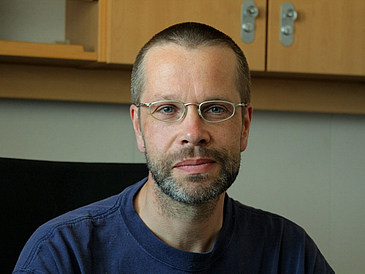The German Research Foundation (Deutsche Forschungsgemeinschaft – DFG) has awarded the University of Bremen – in the person of oceanographer Prof. Wolfgang Bach – a grant amounting to EUR 1.5 million. Over a period of five years, the MARUM researcher will use the money to fund laboratory experiments and investigate the processes triggered by heated seawater when it circulates in the ocean crust. Among other things, these processes determine the chemical composition of the oceans and play a central role in global marine biogeochemical cycles. The findings obtained from the experiments are also expected to significantly advance the numerical modeling of these processes. The funding has been allocated within the context of a Reinhart Koselleck project, via which the DFG provides support for research of an especially innovative nature.
The ocean floor is a fascinating research area. It is nothing like the sealed block that many people imagine it to be; rather, it is porous and completely penetrated with a complex net of cracks. These clefts and pores can be quite big, measuring several decimeters, or merely micrometers in size. They are home to the “Ocean under the Ocean”. Oceanographers estimate that as much as twenty million cubic meters of seawater is circulating inside the ocean floor at any given time. That equates to something like 2% of all the water in the ocean. Magma released by undersea volcanoes along the mid-ocean ridge heats up the water circulating through the clefts in the ocean floor. This then results in a chemical cocktail of a very special kind: Calcium and silicon dissolves into the water, which at temperatures of 350°C to 400°C then leaches materials like iron, manganese, and other metals from the ocean crust. Because the heated water, heavily laden with dissolved metals, is now of a lighter specific weight, it searches for exits through the clefts in the ocean floor, eventually shooting out of the ocean crust as black “smoke”. Some of the dissolved materials then fall back around the exit holes of the black smokers, where they provide a habitat for specially adapted bacteria, crustaceans, and other organisms – forming veritable oases in the deep sea.
As any attempt to systematically investigate these processes far out in the ocean in depths of several thousand meters would obviously be thwart with difficulty and prohibitively expensive, so Wolfgang Bach simply brings the seafloor into his own laboratory: “We are going to place a cylindrical core with a diameter of just one centimeter inside the new flow facility we intend to build. It can either be of natural rock or synthetic material.” The model ocean floor created for the experimental setup will resemble a black smoker in miniature: the scientists will force water heated to a temperature of 250°C through the core at pressures of up to 400 bar. They will then measure the permeability of the material and at the same time the changes in composition of the water. Using computer tomographs, they will also x-ray the core to detect any microstructural changes. As a final step, the collected data will be used to create a computer model that will be quite capable of reconstructing the processes that actually occur in the real ocean floor.
You can find a more detailed press release here (in german).
Further information / interview requests / graphic material:
Albert Gerdes
MARUM-Öffentlichkeitsarbeit
Phone: 0421 218 65540
e-mail: agerdesprotect me ?!marumprotect me ?!.de


